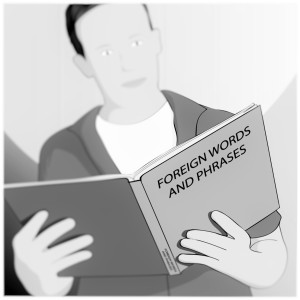As more and more companies scale to reach global markets, logistics management demands a high degree of international coordination. It’s more than the movement of materials and the fulfillment of orders. Under pressure to compete, managers must keep up with the flow of information.
Language diversity is a gigantic challenge in the international environment. As supply chains go global, many companies are finding that the “going” gets tough. When the flow of communication is interrupted (if not damned) by language barriers- companies can lose their competitive edge.
Increasingly, supply chain logistics is less about the movement of materials and more about assurances of the movement. Clients expect orders and customers expect shipments. The execution depends upon carrying out a promise- a promise that passes through multiple languages to its final destination.
How can supply chain leaders make good on their promises and communicate effectively despite language diversity? Let’s use a fictitious situation and examine how companies might respond.
An unhappy customer that speaks Chinese and a warehouse manager that speaks English. Using an interpreter, the customer calls the manager complaining about the late arrival of his order. The manager explains all orders are guaranteed within a window of time and defends the company policy; he encourages the customer to review the paperwork. They hang up. Later, the customer finds the paperwork but it’s in English. He calls back the interpreter to clarify the meaning of “window of time” but the interpreter hadn’t been familiar with the idiom and admitted that he “just translated the words.” He can’t help with the paperwork either because although he speaks English, he can’t read or write it. Frustrated, the customer decides to never again deal with the warehouse company.
Translation, word for word. Words contain the voice and purpose of a business. They must maintain their meaning upon translation and make sense to the target audience.
Words can get “lost” in translation- sometimes irretrievably. The example shows how businesses can suffer great losses when words fail to translate. Especially when words offer a promise, they have to ne communicated with care. Colloquialisms and idioms should be left out of negotiations that involve an interpreter. A simple misunderstanding ended up costing the company a customer, thereby costing them revenue and profits.
One solution is to hire bilingual supervisors and team leaders able to communicate directly with foreign language speaking associates. Management must oversee the team from a bird’s eye view- with detailed updates of its staff. Knowledge as to who is fluent in what language is crucial and should be easily accessible at a moment’s notice.
Transcription and compliance. The written word is a company’s legal weapon. Leaders must have a plan for reading and writing in foreign languages.
Literacy is as important as fluency. Important documents are handled all the time. Written in the wrong language, it takes the right person to read them. The Chinese customer had nobody reliable nearby or on call to read the paperwork. If he had gotten lucky, and someone was nearby with rudimentary English reading skills, the Chinese customer was still at risk of being relayed improper or incomplete information.
Working with a professional translation team offers companies resources that are often unavailable. Especially considering long distances and variable time zones, 24-hour assistance for circumstances even the most language-savvy team can’t handle, should be considered. In choosing a translation team, it’s important they provide proper certifications for notary services and sworn accuracy agreements.
Teamwork from within. Differences in cultural backgrounds, gender and age are considerable factors regarding internal communication and integration among the workforce.
In a polyglot workplace, it’s effective to group people that speak the same language on the same team. Camaraderie among staff contributes to a positive environment overall and allows for new ideas to be shared and implemented.
Many companies face significant employee turnover and have to use temporary labor for peak workloads or special projects. By placing new workers alongside existing workers- with language in common- warehouse managers can better build teams that pull together as one.














